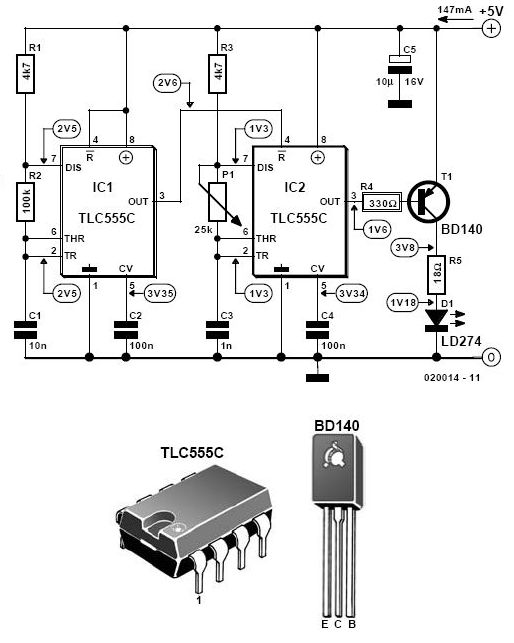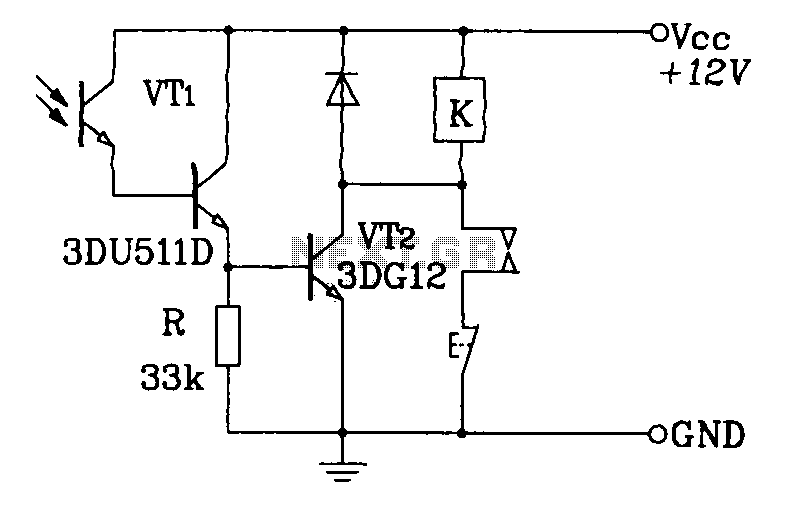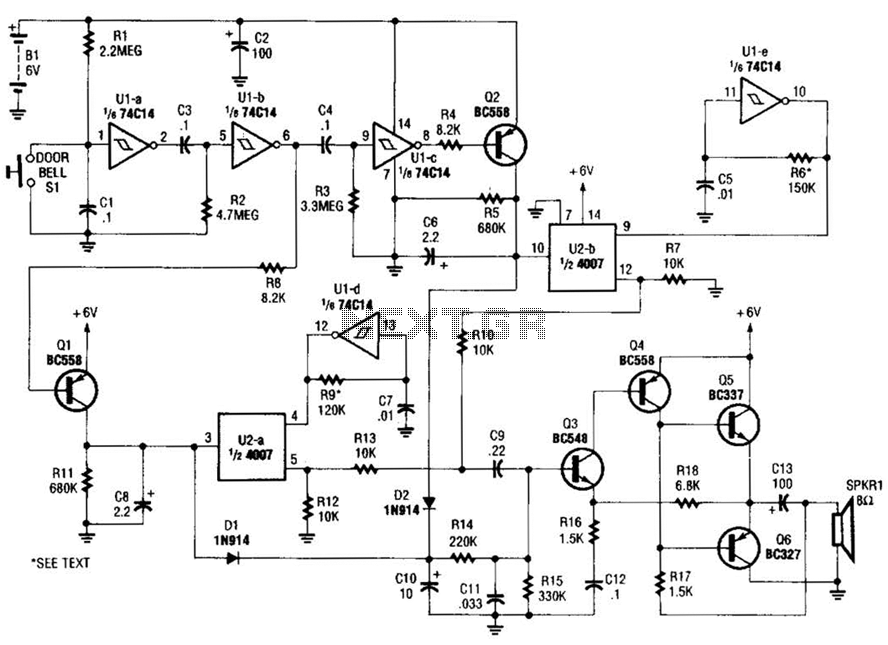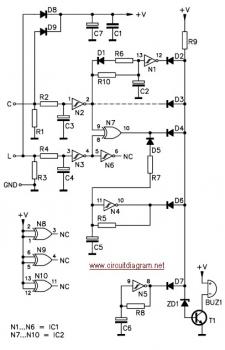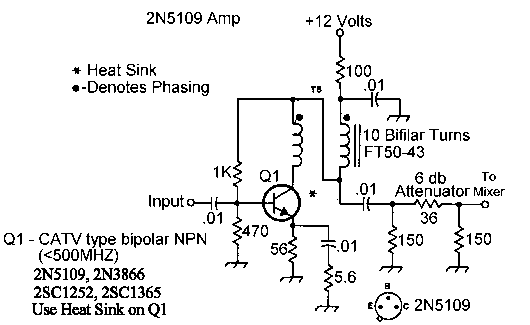
12V Auto-Powered Circuit For Cassette Recorders
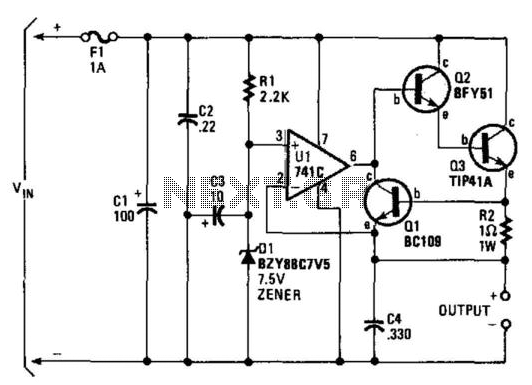
A regulator enables the powering of a 7.5-V cassette recorder or other devices from a 12-V DC automotive system. The circuit can provide approximately 600 mA of current. Q3 requires a heatsink due to its potential to dissipate up to 4 W. F1 should be a slow-blow fuse to prevent unnecessary fuse failures caused by the surge from CI.
The described circuit functions as a voltage regulator, facilitating the conversion of a 12-V DC input from an automotive power system to a stable 7.5-V output suitable for powering devices such as cassette recorders. The primary component responsible for voltage regulation is likely a linear voltage regulator, which maintains a constant output voltage despite variations in input voltage or load current.
The output current capacity of approximately 600 mA indicates that the circuit is designed for low to moderate power applications. The choice of a heatsink for transistor Q3 is critical due to the power dissipation of up to 4 W, which can lead to thermal management issues if not adequately addressed. The heatsink should be selected based on the ambient temperature and the thermal resistance of the device to keep the junction temperature within safe limits.
Incorporation of a slow-blow fuse (F1) in the circuit design is a prudent choice to protect against transient currents that may occur during power-up or when the device experiences inrush current. A slow-blow fuse can withstand temporary surges without blowing, thus ensuring reliable operation of the circuit under normal conditions.
Additional considerations for this circuit may include the selection of capacitors to filter out noise and stabilize the output voltage. Input and output capacitors should be chosen based on the regulator's specifications to optimize performance and transient response. Furthermore, the layout of the circuit board should minimize the length of connections to reduce parasitic inductance and capacitance, which can affect the regulator's performance.
Overall, this voltage regulator circuit is an effective solution for powering 7.5-V devices from a higher voltage source, provided that proper thermal management and protective components are implemented. A regulator allows you to power a 7.5-V cassette recorder or other device from a 12-Vdc au to system. About 600 mA is available from the circuit. Q3 should be heatsinked because it dissipates up to 4 W. F1 should be a slow-blow fuse so that the surge caused by CI does not cause unnecessary fuse failures.
The described circuit functions as a voltage regulator, facilitating the conversion of a 12-V DC input from an automotive power system to a stable 7.5-V output suitable for powering devices such as cassette recorders. The primary component responsible for voltage regulation is likely a linear voltage regulator, which maintains a constant output voltage despite variations in input voltage or load current.
The output current capacity of approximately 600 mA indicates that the circuit is designed for low to moderate power applications. The choice of a heatsink for transistor Q3 is critical due to the power dissipation of up to 4 W, which can lead to thermal management issues if not adequately addressed. The heatsink should be selected based on the ambient temperature and the thermal resistance of the device to keep the junction temperature within safe limits.
Incorporation of a slow-blow fuse (F1) in the circuit design is a prudent choice to protect against transient currents that may occur during power-up or when the device experiences inrush current. A slow-blow fuse can withstand temporary surges without blowing, thus ensuring reliable operation of the circuit under normal conditions.
Additional considerations for this circuit may include the selection of capacitors to filter out noise and stabilize the output voltage. Input and output capacitors should be chosen based on the regulator's specifications to optimize performance and transient response. Furthermore, the layout of the circuit board should minimize the length of connections to reduce parasitic inductance and capacitance, which can affect the regulator's performance.
Overall, this voltage regulator circuit is an effective solution for powering 7.5-V devices from a higher voltage source, provided that proper thermal management and protective components are implemented. A regulator allows you to power a 7.5-V cassette recorder or other device from a 12-Vdc au to system. About 600 mA is available from the circuit. Q3 should be heatsinked because it dissipates up to 4 W. F1 should be a slow-blow fuse so that the surge caused by CI does not cause unnecessary fuse failures.

